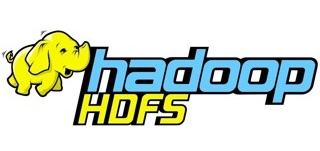Previsna tailor solutions to customers who require real-time analysis, historical data analysis, storage and backup of very large amounts of data. We use tools, technologies and programming languages such as Hadoop HDFS, Hadoop MapReduce, Apache Spark, Apache Storm and Scala.
Hadoop HDFS
 HDFS is a Java-based file system that provides scalable and reliable data storage, and it was designed to span large clusters of commodity servers. HDFS has demonstrated production scalability of up to 200 PB of storage and a single cluster of 4500 servers, supporting close to a billion files and blocks. When that quantity and quality of enterprise data is available in HDFS, and YARN enables multiple data access applications to process it, Hadoop users can confidently answer questions that eluded previous data platforms. HDFS is a Java-based file system that provides scalable and reliable data storage, and it was designed to span large clusters of commodity servers. HDFS has demonstrated production scalability of up to 200 PB of storage and a single cluster of 4500 servers, supporting close to a billion files and blocks. When that quantity and quality of enterprise data is available in HDFS, and YARN enables multiple data access applications to process it, Hadoop users can confidently answer questions that eluded previous data platforms.
HDFS is a scalable, fault-tolerant, distributed storage system that works closely with a wide variety of concurrent data access applications, coordinated by YARN. HDFS will “just work” under a variety of physical and systemic circumstances. By distributing storage and computation across many servers, the combined storage resource can grow linearly with demand while remaining economical at every amount of storage.
Hadoop MapReduce
 MapReduce is the heart of Hadoop®. It is this programming paradigm that allows for massive scalability across hundreds or thousands of servers in a Hadoop cluster. The MapReduce concept is fairly simple to understand for those who are familiar with clustered scale-out data processing solutions. MapReduce is the heart of Hadoop®. It is this programming paradigm that allows for massive scalability across hundreds or thousands of servers in a Hadoop cluster. The MapReduce concept is fairly simple to understand for those who are familiar with clustered scale-out data processing solutions.
For people new to this topic, it can be somewhat difficult to grasp, because it’s not typically something people have been exposed to previously.
Apache Spark
 What can be said about Apache Spark that has not been said already? The general compute engine for typically Hadoop data, is increasingly being looked at as the future of Hadoop given its popularity, the increased speed, and support for a wide range of applications that it offers.
However, while it may be typically associated with Hadoop implementations, it can be used with a number of different data stores and does not have to rely on Hadoop. What can be said about Apache Spark that has not been said already? The general compute engine for typically Hadoop data, is increasingly being looked at as the future of Hadoop given its popularity, the increased speed, and support for a wide range of applications that it offers.
However, while it may be typically associated with Hadoop implementations, it can be used with a number of different data stores and does not have to rely on Hadoop.
It can for example use Apache Cassandra and Amazon S3. Spark is even capable of having no dependence on Hadoop at all, running as an independent analytics tool. Sparks flexibility is what has helped make it one of the hottest topics in the world of big data and with companies like IBM aligning its analytics around it, the future is looking bright.
Apache Storm
 Storm is a distributed real-time computation system for processing large volumes of high-velocity data. Storm is extremely fast, with the ability to process over a million records per second per node on a cluster of modest size. Enterprises harness this speed and combine it with other data access applications in Hadoop to prevent undesirable events or to optimize positive outcomes.
Storm is a distributed real-time computation system for processing large volumes of high-velocity data. Storm is extremely fast, with the ability to process over a million records per second per node on a cluster of modest size. Enterprises harness this speed and combine it with other data access applications in Hadoop to prevent undesirable events or to optimize positive outcomes.
Some of specific new business opportunities include: real-time customer service management, data monetization, operational dashboards, or cyber security analytics and threat detection.
Scala
 Scala is an acronym for "Scalable Language". This means that Scala grows with you. You can play with it by typing one-line expressions and observing the results. But you can also rely on it for large mission critical systems, as many companies, including Twitter, LinkedIn, or Intel do. Scala is an acronym for "Scalable Language". This means that Scala grows with you. You can play with it by typing one-line expressions and observing the results. But you can also rely on it for large mission critical systems, as many companies, including Twitter, LinkedIn, or Intel do.
Scala is a pure-bred object-oriented language. Conceptually, every value is an object and every operation is a method-call. The language supports advanced component architectures through classes and traits.
Scala is also a functional language in the sense that every function is a value. Scala provides a lightweight syntax for defining anonymous functions, it supports higher-order functions, it allows functions to be nested, and supports currying. Scala’s case classes and its built-in support for pattern matching model algebraic types used in many functional programming languages. Singleton objects provide a convenient way to group functions that are not members of a class.
Scala builds on top of the JVM and the Java ecosystem, taking advantage of the platforms robust tooling and libraries. Many modern "big data" tools, such as the Hadoop ecosystem, Apache Spark and Cassandra, are built on the JVM, and so we can use their primary client libraries.
|